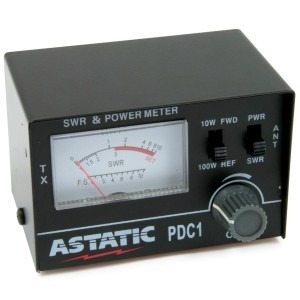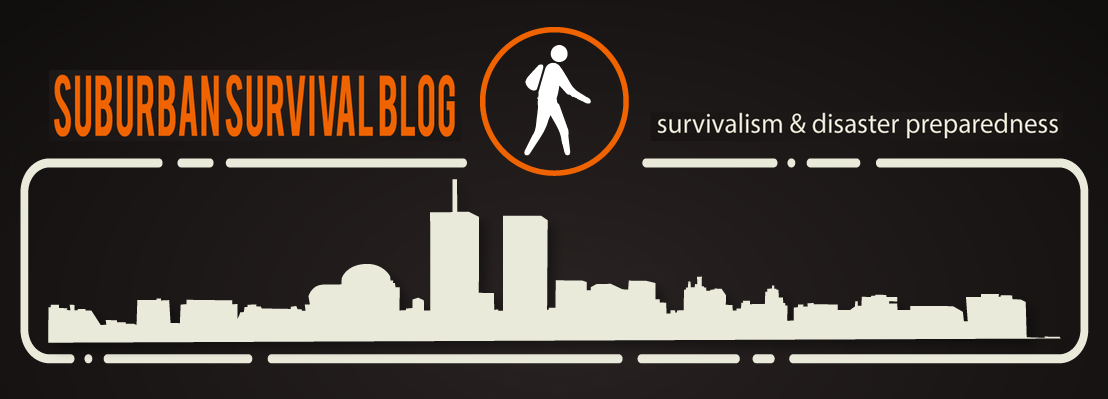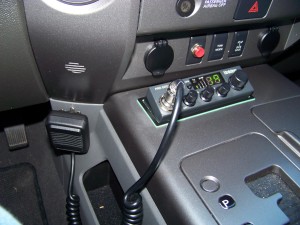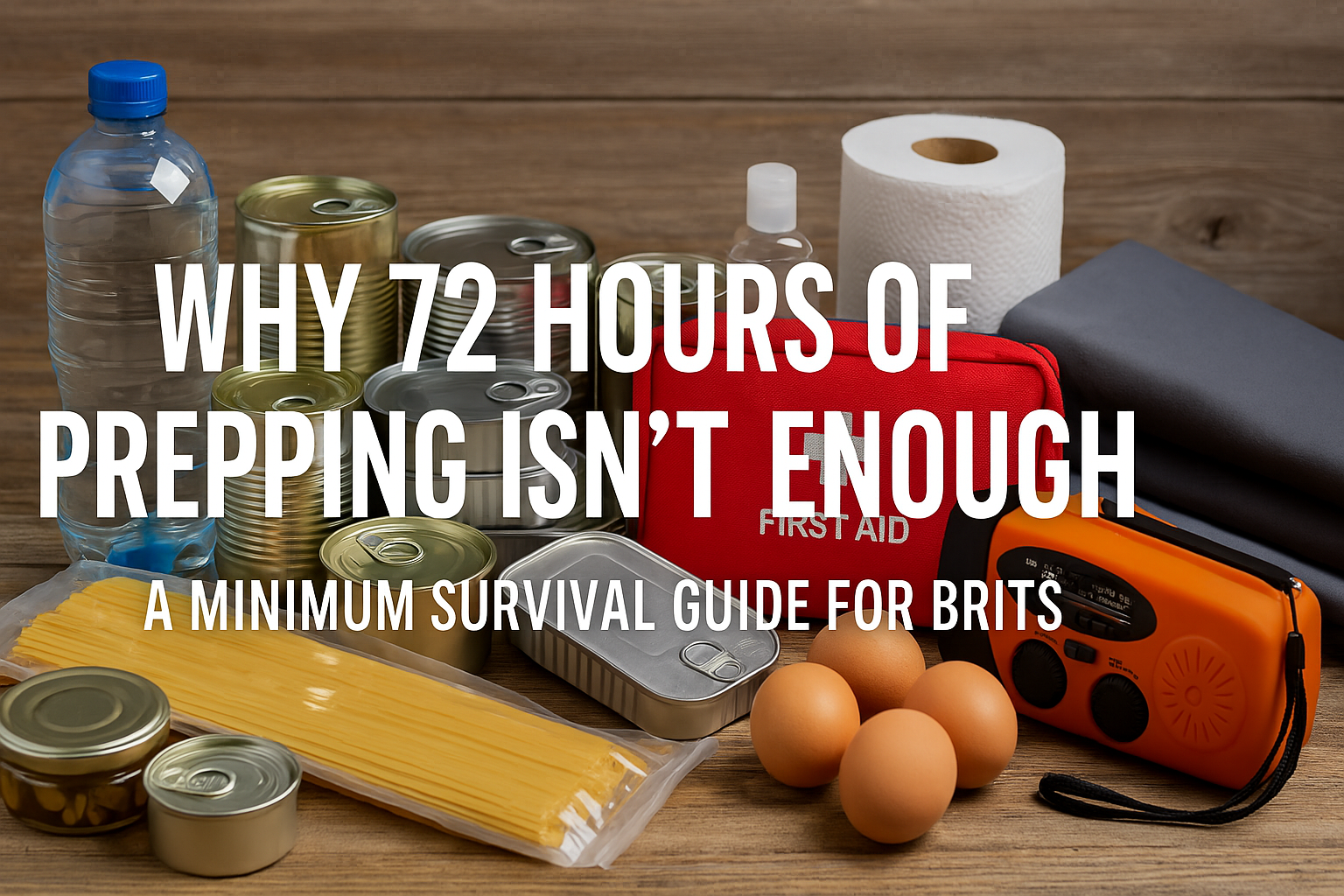In part one of this article, we covered the gear and techniques necessary for a proper installation of CB radio in a vehicle…so now that the system is set up, lets learn how to optimize its transmission capability. In part two, we will discuss a few common problems that can create unwanted noise. This isn’t comprehensive but it will cover most problems that will arise and address how to fix them.
SWR
The first thing we need to address is SWR. SWR is short for Standing Wave Ratio… essentially, it measures how well your equipment will transmit and receive on the specific frequency you intend to use. If you have everything grounded properly, your equipment is impedance matched, and you have a decent antenna mounted in the correct location, the SWR should be ok. An SWR reading of 1:1 is optimal but a reading of 1.5:1 is excellent, a reading of 2:1 is considered good (actually great for most applications), but anything higher than 3:1, well, you pretty much wasted your time with the installation. Getting the best SWR on your specific rig is a matter of trial and error… in my experience, you can’t go wrong if you ground everything well and place the antenna on top of a metal roof or mount it where at least a portion of the antenna clears the roofline.
An SWR meter measures the SWR (duh!!) and can be picked up at any radio shack or electronic  supply house. Most come complete with directions and are pretty easy to use, even for a novice. If you’re unhappy with the SWR you get from your setup initially, don’t worry, you can improve it by tuning your antenna. All antennas are tunable, but some are tuned easier than others. Some need to be cut and some need to be bent to retard the oscillation on the part past the bend. The K40, for example, is one of the easier ones; it has a small whip that sticks out the top on the antenna and is moved up and down using a supplied Allen key; by adjusting the length of the whip, you can receive a better SWR reading.
supply house. Most come complete with directions and are pretty easy to use, even for a novice. If you’re unhappy with the SWR you get from your setup initially, don’t worry, you can improve it by tuning your antenna. All antennas are tunable, but some are tuned easier than others. Some need to be cut and some need to be bent to retard the oscillation on the part past the bend. The K40, for example, is one of the easier ones; it has a small whip that sticks out the top on the antenna and is moved up and down using a supplied Allen key; by adjusting the length of the whip, you can receive a better SWR reading.
Noise Elimination
Even if you are happy with the SWR you get on your system, you may still have problems with noise (one doesn’t necessarily effect the other) so lets learn how to eliminate that noise.
Most radios come with an internal noise filter… a button or toggle switch on the face of the radio that eliminates much of the squelch noise from the radio output. The problem with this feature is that it also makes distant transmissions difficult to hear. If you want to (or need to) address the problem further, know that noise on a CB unit (while the engine is running) is normally caused by two things… 1) noise coming through the hotline of the radio or 2) noise being picked up by the antenna.
(Note: You need to remember, a CB picks up 27MHz radio waves and an engine or other vibrations can cause interference and distortion of those radio waves. Power windows or seats can cause feedback… that’s normally caused by the electrical motor. An older engine can create oscillation heard on a CB… chances are it’s the points spinning in the distributor. So noise isn’t necessarily just an electrical hotline problem… you need to eliminate both possibilities mentioned above.)
A few simple tests can isolate where the noise is coming from.
Hook the radio up to the battery directly or better yet, a separate battery not hooked into the truck’s electrical system. This will bypass and eliminate any noise caused by the alternator or firing of the cylinders. If you still get noise, it’s coming in through the antenna.
Disconnect the feedline from the antenna or the feedline from the radio. This will eliminate any noise being received on the antenna. If you still get the noise, it’s coming from the power/ground lines.
I’ve had both types of problems (both on the same rig once)… so here are the fixes I used to eliminate most (not all) of the noise.
Antenna noise
To eliminate noise caused by the antenna receiving unwanted signals, put in an “antenna choke.” Disclaimer time: I have an idea why this fix works but Im not quite sure if I understand the radio theory is correct as I understand it….and I haven’t gotten a straight answer from anyone on the  matter so do me a favor and don’t ask because all I can tell you is that it does work. Take about 6 feet of the feedline and wrap it into 6 or 8 loops (kind of like wrapping up an electrical cord or piece of rope but about the diameter of a coffee can) then tape the loops together. If an antenna choke doesn’t successfully eliminate all noise, there are other methods to try. Try changing the location of your antenna to a spot on the vehicle where it is shielded from the engine. Radio waves are line of sight reception and sometimes simply hiding the antenna from the constant oscillation of the engine can do the trick. Another method is to try using shorter or longer lengths of coax… but unless you know how to solder a PL259 connector that is an expensive exercise in trial and error and… try the other methods first.
matter so do me a favor and don’t ask because all I can tell you is that it does work. Take about 6 feet of the feedline and wrap it into 6 or 8 loops (kind of like wrapping up an electrical cord or piece of rope but about the diameter of a coffee can) then tape the loops together. If an antenna choke doesn’t successfully eliminate all noise, there are other methods to try. Try changing the location of your antenna to a spot on the vehicle where it is shielded from the engine. Radio waves are line of sight reception and sometimes simply hiding the antenna from the constant oscillation of the engine can do the trick. Another method is to try using shorter or longer lengths of coax… but unless you know how to solder a PL259 connector that is an expensive exercise in trial and error and… try the other methods first.
Hotwire noise
First off, try attaching the hot wire(s) from the radio directly to the battery for the vehicle. Much of the noise picked up through the hot wire comes from the alternator feeding current into the system.
This method should work, but if not, try installing an external noise filter onto the hot wire and ground wire of your CB. They are small cylinders (about the size of a bicycle handle) and can be picked up at Radio Shack or other electronics stores. Simply attach the hot wire(s) from the radio to the red wire of the filter, then the red wire on the other side of the filter to a power source. Attach the ground wire from the radio to the black wire on the filter, then the black wire on the other side of the filter to a chassis ground.
These techniques should help you set up a radio properly, even if you run into difficulties. It may take some time and trouble shooting on your part but you’ll be left with minimal noise and decent reception/transmission capabilities. The cost shouldn’t be too bad either… all can be done for under $100 with new equipment but if your budget allows, feel free to spend more.









